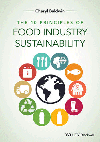Download White Paper on Compressed Air Contamination in the Food Industry

Compressed air is used in a broad range of applications in the food processing industry such as mixing of ingredients, cutting, sparging, drying of product,

|
transporting/propelling product through processing systems and packaging of final product. In many of these applications, compressed air is in direct contact or indirect contact with food product and the impurities in the compressed air may contaminate the food product which can result in change of color and taste, reduced shelf life, in addition to exposure to bacteria and other microorganisms can result in product recalls. Compressed air, which is generated on site by pulling in ambient air and compressing it, contains water vapor, particulate matter (atmospheric air typically contains 140-150 million dirt particles/m3)1 oil vapor and droplets and microorganisms such as bacteria, viruses, fungi and spores (atmospheric air can contain up to 100 million microorganisms/m3)2 In addition, compressed air will also contain liquid oil, oil aerosols and oil vapor which leak in through worn seals, orifices and o-rings within the compressor. Since the compression process raises the temperature of the air, the air is then cooled before use, which condenses water vapor into water aerosols and droplets. Water in the compressed air can produce rust and corrosion in the piping which flakes off and is carried downstream, potentially contaminating the food product. In addition, water condensate and warm compressed air provides the ideal environment for microbiological growth, growth of bacteria, spores and mold.
Looking for a reprint of this article?
From high-res PDFs to custom plaques, order your copy today!






